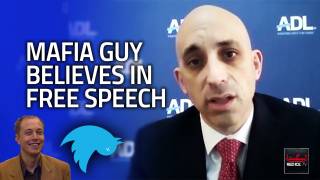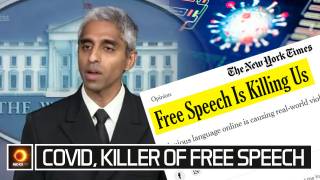How Free Speech Lost in Charlottesville
America’s news reporters couldn’t get enough of last summer’s Charlottesville mayhem when the story tangentially involved Donald Trump. But when a special report commissioned by the city this week finally gives us something approaching a detailed story of what happened that awful day, the media couldn’t care less.
Read the report yourself. As with any governmental snafu, plenty of shortcomings are detailed in the city’s planning and actions, not to mention a dubious effort by the police chief after the fact to control the fact-finding. A bigger picture, though, suggests the city should have canceled the white nationalist groups’ permit on grounds that the city couldn’t assure their safety given the expected influx of counterprotesters.
Yes, this would have been to invite a First Amendment lawsuit. It would have meant, as the city’s lawyers argued, issuing a “heckler’s veto” to left-wing activists, who sadly were the primary threat of violence.
The white nationalists may be crazy but not the kind of crazy as to welcome being manhandled by a mob 40 times their size. And force majeure is a pretty good legal argument.
I should point out, this is my conclusion, not the report’s. The report, by former federal prosecutor Timothy J. Heaphy, a partner at Hunton & Williams, couldn’t be clearer that most Charlottesville residents revile the “white supremacists,” but the report’s first line also refers to Americans’ belief in “an ordered liberty that guarantees all Americans the right to express themselves in the public square.”
Five weeks before the rally in question, a KKK group from North Carolina, consisting of fewer than 60 people, held a permitted rally in Charlottesville. More than 1,500 counterprotesters showed up. The city urged left-wing groups to organize protest events away from the Klan rally. Under the slogan “don’t take the bait,” police advised local activists not to confront the Klan. The permit holder, Amanda Barker, asked the city not to publicize the permit until the last minute to discourage an influx of out-of-town activists—a request the town would have been wise to honor.
“Counterprotester” is perhaps the wrong term, because antiracist demonstrators came not to express their own views but to attack a legally sanctioned gathering. A lucky break was a late decision, contrary to plan, to allow the Klan to park in an enclosed downtown garage rather than an open lot. Without this tactical advantage, one officer later said “we probably would have had to shoot someone” to allow the Klan to leave town.
Only after the Klan left did the real riot begin, featuring attacks on police, which the Virginia State Police broke up with tear gas.
The KKK event was foreshadowing. Five weeks later came the so-called Unite the Right rally that became a national and global scandal. A New York City detective phoned in advance to warn local police about “Black Lives Matter” activists heading to Charlottesville. A joint state and federal police agency, the Virginia Fusion Center, “shared credible threats that members of Antifa would bring soda cans filled with cement and might attack police.”
To avoid giving left-wing counterprotesters the impression the police were ready for a fight, officers were denied permission to don riot gear. A proposal that local militants be asked to sign statements forswearing violence was rejected. A proposal to close the whole of downtown to vehicle traffic was rejected. A petition from local businesses to cancel the event was rejected.
Instead—and this is a bit hard to believe—the local police chief’s plan was to let the violence at the Aug. 12 event get out of hand and then declare an unlawful assembly to justify unleashing a Virginia State Police riot force to disperse the crowd.
A name familiar to readers of this column will be Pam Starsia, a left-wing leader in Charlottesville who consistently resisted police efforts to protect peace and property as a manifestation of “white supremacy.”
The report is unflinching in its portrayal of Charlottesville police standing behind barricades and failing to intervene in the face of multiple crimes. The “one instance” that represents an exception is captured on page 128. A photo shows Lt. Joe Hatter, head of the department’s investigative unit, towering over a banner-waving white nationalist whom he had just rescued from a mob.
As the report details, the armed militias that featured so heavily in press coverage at the time, and were wrongly assumed to be aligned with the white nationalists, closed in to give the officer cover while he intervened and generally acted to protect members of the public regardless of affiliation.
Two officers were recorded discussing the incident on their body-cam mikes: “I like those militia guys,” said one. His colleague replied, “Yeah, they’re doing a good job.”






















